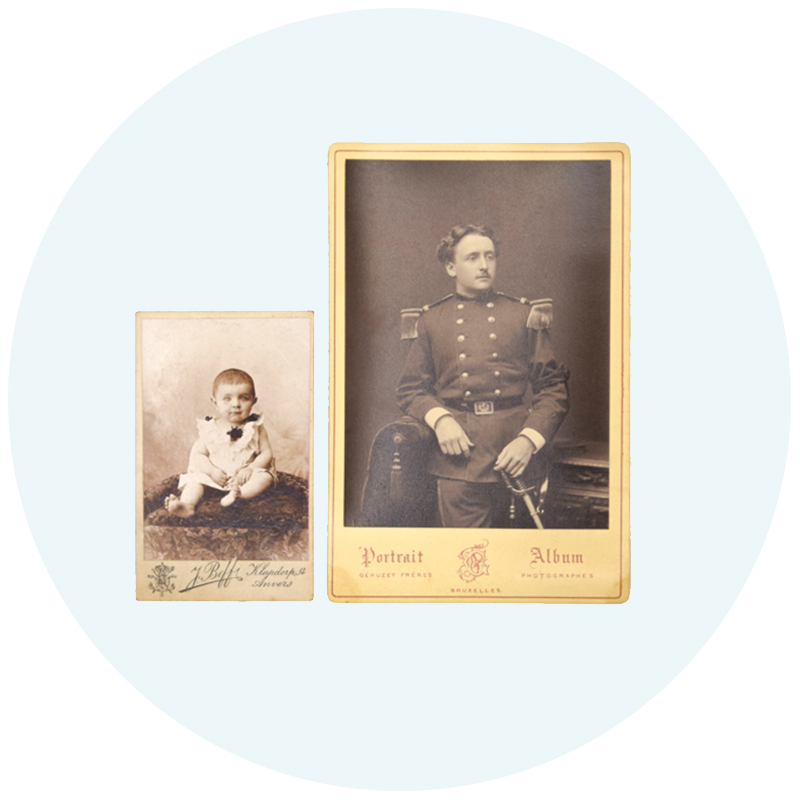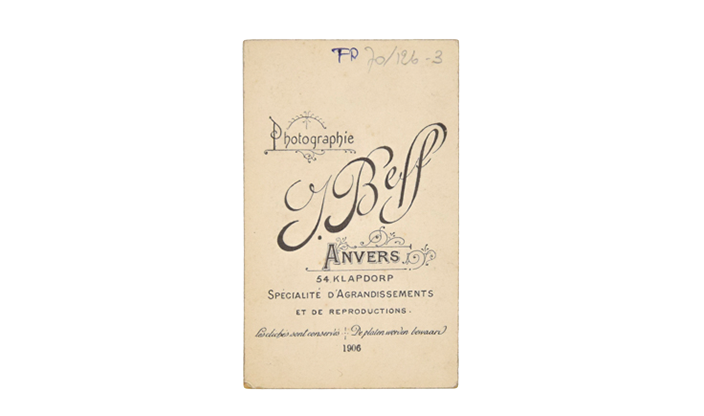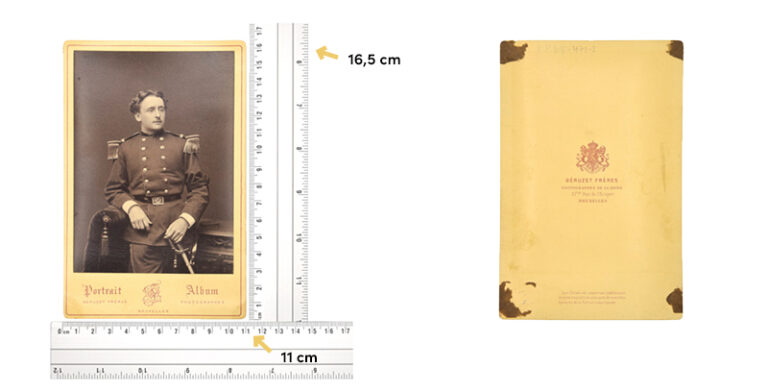The portraits on cartes de visite were enthusiastically collected and filled many photo albums. The rear or bottom of the photo usually contained information about the photographer, such as their name and address, sometimes together with the name of the person pictured. The most common size was 10 x 6.3 cm (4 x 2.5 inch).
They became less popular around 1870, when demand for slightly larger cabinet cards increased, but cartes de visite continued to be produced until the 1910s.
Storage
Some cartes de visite may have faded spots on them, in which case it’s particularly important to store them under constant temperature and humidity conditions.
Did you know …
… some albums were specially designed for cartes de visite? If you have one of these photo albums, you should keep it together as a whole and not remove any of the photos. You can find more info about photo albums here.
Cabinet card
You have a cabinet card on your hands. Cabinet cards were popular from the late 1860s and drove down demand for the smaller cartes de visite.
They are often family portrait photos and, like cartes de visite, were glued to card. The most common size including the cardboard was approximately 10.7 x 16.5 cm (6.5 x 4.25 inch).
Colour
Even though they are always black-and-white, some cabinet cards can display sepia or yellowish colours, depending on the procedure that was used to develop the photo. They disappeared from the scene again in the 1910s.
Did you know …
… people often made notes on the back of cabinet cards? So make sure you have a look on the back to maybe discover more about who is on the photo or where it was taken.
The name and logo of the photographer or studio often appeared in the border on the front of the photo.






